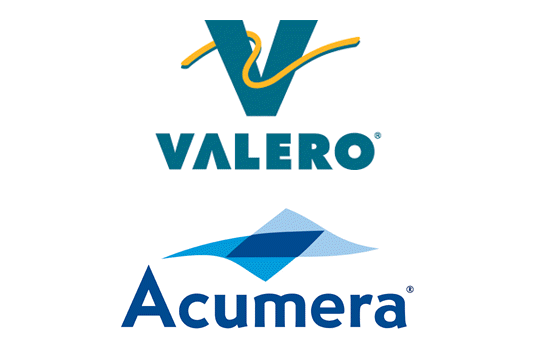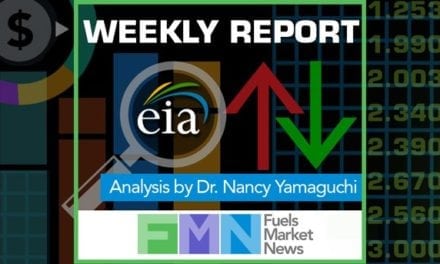By Darren Dohme
In the last six months, crude oil prices have dropped from over $55 dollars per barrel on January 3, 2017, down to near $42 dollars per barrel on June 21. That’s a 24% drop in the price of oil. Diesel fuel futures have dropped about the same percentage.
You can hardly understand the fundamentals of the world oil market right now, with OPEC trying to hold together their coalition of production cuts only to see Libya and Nigeria jack their production rates sharply higher. As I’m writing this, a news story flashes up that Libya’s production recovers to 1 million barrels per day. U.S. shale oil producers continue to drill new wells and bring older ones online that have a six-month amortization rate.
On the bull side of the market, we have one of the biggest Middle East catalysts seen in years. A Saudi Arabian-led coalition of Middle Eastern countries is set to tighten down severe sanctions on Qatar for supporting terrorist activity. On the other side of Saudi Arabia’s coalition are Turkey and Iran, which are both supporters of Qatar. A big Middle East rift could easily spiral out of control in the coming months.
The decision to buy diesel fuel into the forward curve is mentally one of the toughest challenges you could put on yourself right now. It could also be one of the most important decisions you make for the future profitability of your company. Fuel price risk has not been much of a concern over the last several years. However, with diesel fuel prices trading near the bottom of a three-year trading range, upside price risk seems greater than the downside risk. Now is a good opportunity to hedge that price risk.
The Best Strategy to Use Is a Maximum Price Contract
This strategy will allow you to “CAP” your upside price risk while allowing you to participate in “100% of the downside.” To a CFO of a trucking business or any diesel fuel end user, is that not the ultimate definition of price risk control? A maximum price diesel fuel contract will allow you to come in on budget or under budget. Now that’s a win-win strategy.
You can do this by using the futures options market and buying call options to protect your upside price risk.
A call option works like an insurance policy against higher prices. You pay a premium for a certain level of price protection. If the future market rallies, the call option will pay you penny for penny of what the futures market settles above your call option strike price or insured price level.
If the diesel fuel futures price does not settle above your price protection level, then nothing happens and all you lose is your option or insurance premium. The house didn’t burn, so to speak. Every year you buy homeowners insurance and you are happy to lose your insurance premium. That’s the mentality that you should have when protecting your diesel fuel price each year. If you lose your call option premium, then the price of diesel fuel did not rally over your protected price level.

Here’s an example of how a maximum price diesel fuel contract works:
- First, you need a hedging account. You can open one with Powerline Group, and we will walk you through the strategy and hold your hand the entire way.
- The calendar 2018 futures price strip for diesel fuel is trading at $1.52 per gallon. For this example, we just averaged the 12 months of January 2018 – December 2018 futures prices.
- We then buy an at the money call option at a $1.52 strike price. This call option gives you penny-for-penny upside price protection for 16 cents per gallon. That amount is paid upfront.
- We would then add in an estimated basis cost of 15 cents per gallon. This is the difference in futures price and cash price.
- Then add in an estimated trucking cost of 4 cents per gallon to the truck stop or to your storage tanks.
- Add in another cost of 15 cents per gallon in estimated margin by the truck stop or jobber.
- Add in the estimated cost of 16 cents per gallon for the call options upside price protection.
A total estimated cost of close to $2.02 per gallon is what you could put into your budget, excluding taxes.

What Happens When It Comes Time to Deliver/Take the Fuel?
- If next January comes and the futures market settles at $2.00 per gallon, then the call option will be worth 48 cents per gallon ($2.00 – $1.52 = $0.48).
- If next January comes and futures price expires off at $1.40 per gallon, then nothing happens and all you lose is the insurance premium that you paid for the call option.
- If diesel fuel futures are lower than $1.52 at settlement time, then your company would purchase the physical fuel at a cheaper price than when the hedge was initiated.
This strategy can be modified to fit your own budget and volume needs.
 Darren Dohme has been in the petroleum hedging business for 30 years. He was one of the first to utilize the newly listed gasoline and heating oil options for commercial hedgers and end users to build price cap contracts, which became a great success through the first Gulf War in 1989. Customers that he personally instructed on the hedging strategy include the U.S. Department of Energy (DOE), Bank of America’s large Asian and Australian petroleum customers, UPS, Cargill, John Deere and many other major over-the-road trucking fleets, railroads and barge companies. Darren was also one of the first to fulfill a need to hedge a fluctuating retail gasoline street margin for the retail marketing industry. Darren is also a managing partner of Powerline Petroleum and understands that every cent counts. Powerline works with both transportation companies and other end users of diesel fuel to help cap their fuel prices, and also works with petroleum jobbers and wholesalers to offer Maximum Price Contract Programs to their customers. If you would like to learn more on how this hedge strategy could work for you, call or email Powerline Group today. You can find information at www.PowerlineGroup.net.
Darren Dohme has been in the petroleum hedging business for 30 years. He was one of the first to utilize the newly listed gasoline and heating oil options for commercial hedgers and end users to build price cap contracts, which became a great success through the first Gulf War in 1989. Customers that he personally instructed on the hedging strategy include the U.S. Department of Energy (DOE), Bank of America’s large Asian and Australian petroleum customers, UPS, Cargill, John Deere and many other major over-the-road trucking fleets, railroads and barge companies. Darren was also one of the first to fulfill a need to hedge a fluctuating retail gasoline street margin for the retail marketing industry. Darren is also a managing partner of Powerline Petroleum and understands that every cent counts. Powerline works with both transportation companies and other end users of diesel fuel to help cap their fuel prices, and also works with petroleum jobbers and wholesalers to offer Maximum Price Contract Programs to their customers. If you would like to learn more on how this hedge strategy could work for you, call or email Powerline Group today. You can find information at www.PowerlineGroup.net.
This material has been prepared by a sales or trading employee or agent of Powerline Petroleum, LLC and is, or is in the nature of, a solicitation. By accepting this communication, you agree that you are an experienced user of the futures markets, capable of making independent trading decisions, and agree that you are not, and will not rely solely on this communication in making trading decisions.
Distribution in some jurisdictions may be prohibited or restricted by law. Persons in possession of this communication indirectly should inform themselves about and observe any such prohibition or restrictions. To the extent that you have received this communication indirectly and solicitations are prohibited in your jurisdiction without registration, the market commentary in this communication should not be considered a solicitation.
The risk of loss in trading futures and/or options is substantial and each investor and/or trader must consider whether this is a suitable investment. Past performance, whether actual or indicated by simulated historical tests of strategies, is not indicative of future results. Trading advice is based on information taken from trades and statistical services and other sources that Powerline Petroleum, LLC believes are reliable. We do not guarantee that such information is accurate or complete and it should not be relied upon as such. Trading advice reflects our good faith judgment at a specific time and is subject to change without notice. There is no guarantee that the advice we give will result in profitable trades.









